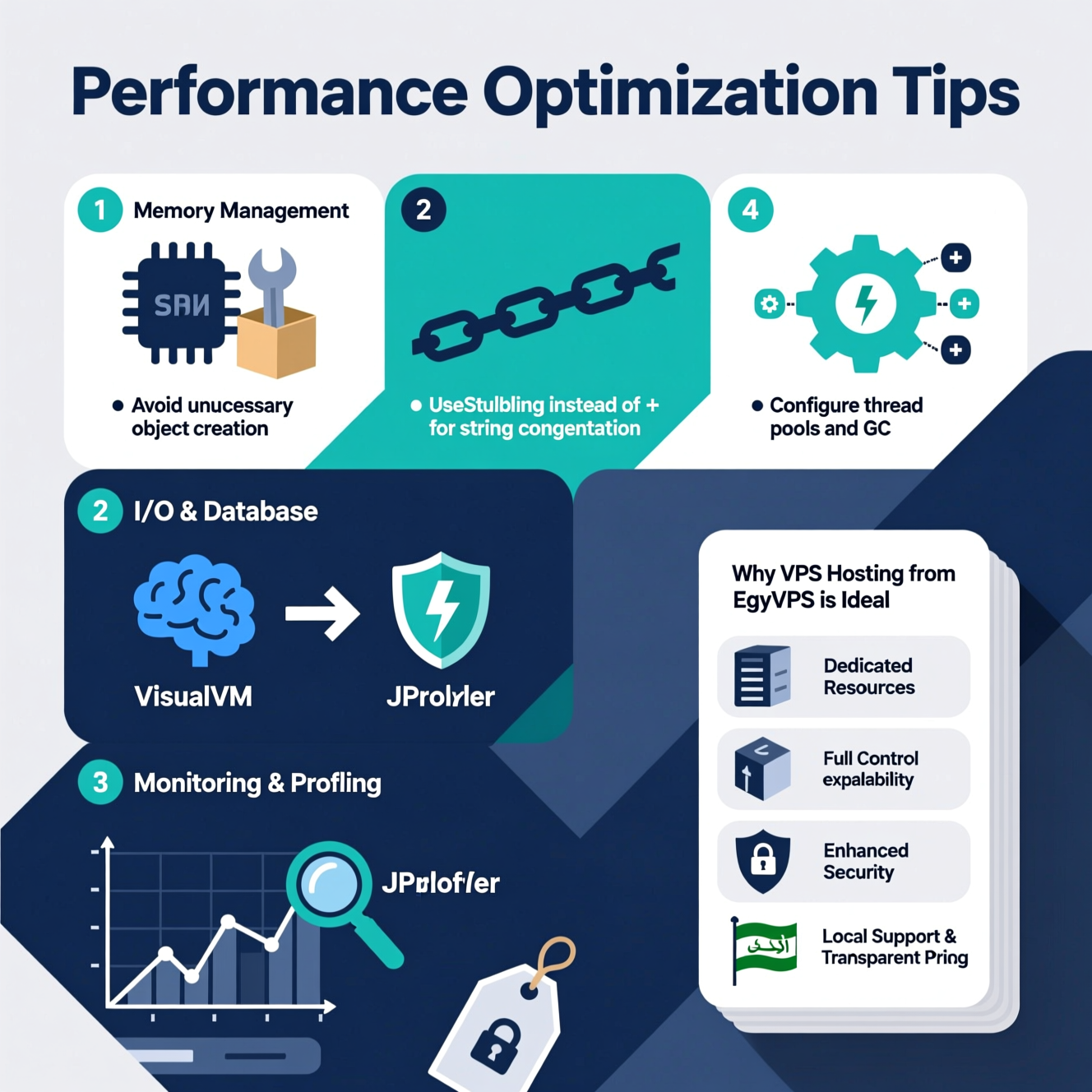Deploying Java applications on a VPS can be challenging for beginners and experienced developers alike. Choosing the right operating system, configuring the server properly, automating deployments, and securing your application are key steps to ensure smooth and high-performance Java hosting.
In this guide, we cover the best practices for Java deployment on VPS, comparing Linux vs Windows, providing recommended configurations, automation strategies, security tips, and performance optimization.
Linux Advantages:
Lightweight and efficient, consumes fewer resources.
Free and open-source, reducing hosting costs.
Highly customizable for your Java environment.
Strong community support and security.
Windows Advantages:
User-friendly GUI, easy to manage for beginners.
Compatible with Microsoft technologies like ASP.NET and SQL Server.
Requires licenses and more server resources.
Comparison Table:
| Feature | Linux | Windows |
|---|---|---|
| Performance | Fast, low resource usage | Heavier, requires stronger hardware |
| Cost | Free | Requires licenses |
| Flexibility | Highly customizable | Less flexible |
| Tech Support | Java, PHP, Python, Ruby | Microsoft stack (ASP.NET, SQL Server) |
| Security | Strong, active community | Needs additional protection |
| Ease of Use | CLI knowledge required | GUI is beginner-friendly |
Recommendation:
Use Linux for most Java projects, especially high-traffic or resource-intensive applications.
Use Windows only if your project depends on Microsoft technologies or you need a GUI.
Java Installation:
Install JDK or JRE using package managers: sudo apt install openjdk-17-jdk (Ubuntu) or rpm -ivh jre-8u73-linux-i586.rpm (CentOS).
Set the JAVA_HOME environment variable.
Memory and JVM Settings:
Configure heap memory using Xms and Xmx:
Set initial and maximum heap sizes to avoid frequent memory reallocations.
File Permissions:
Ensure correct permissions for Java files and Tomcat directories for security and stability.
Swap & Resource Management:
Monitor CPU, RAM, and swap usage to prevent server overload and crashes.

Automating Java deployment ensures consistent and error-free releases.
Recommended Tools:
CI/CD Platforms: Jenkins, GitLab CI/CD, CircleCI, GitHub Actions
Build Tools: Maven, Gradle
Testing: JUnit, Mockito
Quality Checks: SonarQube
Workflow Example:
Build: Use Maven or Gradle to compile and package your app (.jar or .war).
Test & Scan: Run automated tests and quality analysis.
Deploy: Copy files to VPS using SCP or Docker. Restart Tomcat or systemd service.
Monitor: Verify deployment with health checks and logs.
SSH Keys:
Disable password login, use SSH keys for secure access.
Firewall Setup:
Allow only essential ports (22, 80, 443, 8080).
Block unnecessary connections to reduce attack surface.
Server Updates:
Regularly update Java, Tomcat, and system packages.
Advanced Options:
IDS/IPS or Suricata for intrusion detection.
Use tools like nmap to verify open ports.
Memory Management:
Avoid unnecessary object creation, use StringBuilder instead of + for string concatenation.
Configure thread pools and garbage collector for optimal performance.
I/O & Database:
Use asynchronous or parallel I/O operations.
Optimize database connections to reduce latency.
Monitoring & Profiling:
Use profiling tools like VisualVM or JProfiler to detect bottlenecks.
Monitor app performance with New Relic or SolarWinds AppOptics.

Dedicated Resources: Ensures consistent performance without interference from other users.
Full Control: Customize JVM, libraries, and server environment.
Scalability: Easily increase RAM, CPU, or storage as your app grows.
Enhanced Security: Isolated environment with firewall and protection options.
Local Support & Transparent Pricing: Fast support in Arabic and clear pricing.
Q1: Can I deploy Java .jar files directly on VPS?
Yes, after installing JDK or JRE, run java -jar your_file.jar.
Q2: Should I choose Linux or Windows for Java hosting?
Linux is preferred for most Java projects due to performance and cost efficiency. Windows is suitable for Microsoft-based applications.
Q3: How can I automate Java deployment?
Use CI/CD pipelines with Jenkins, GitLab CI, or CircleCI integrated with Maven/Gradle for builds and tests.
Q4: How do I secure Java apps on VPS?
Use SSH keys, firewall rules, regular updates, and optional IDS/IPS protection.
Q5: Can I use Docker for Java apps?
Yes, Docker provides isolated and portable environments for reliable deployment.